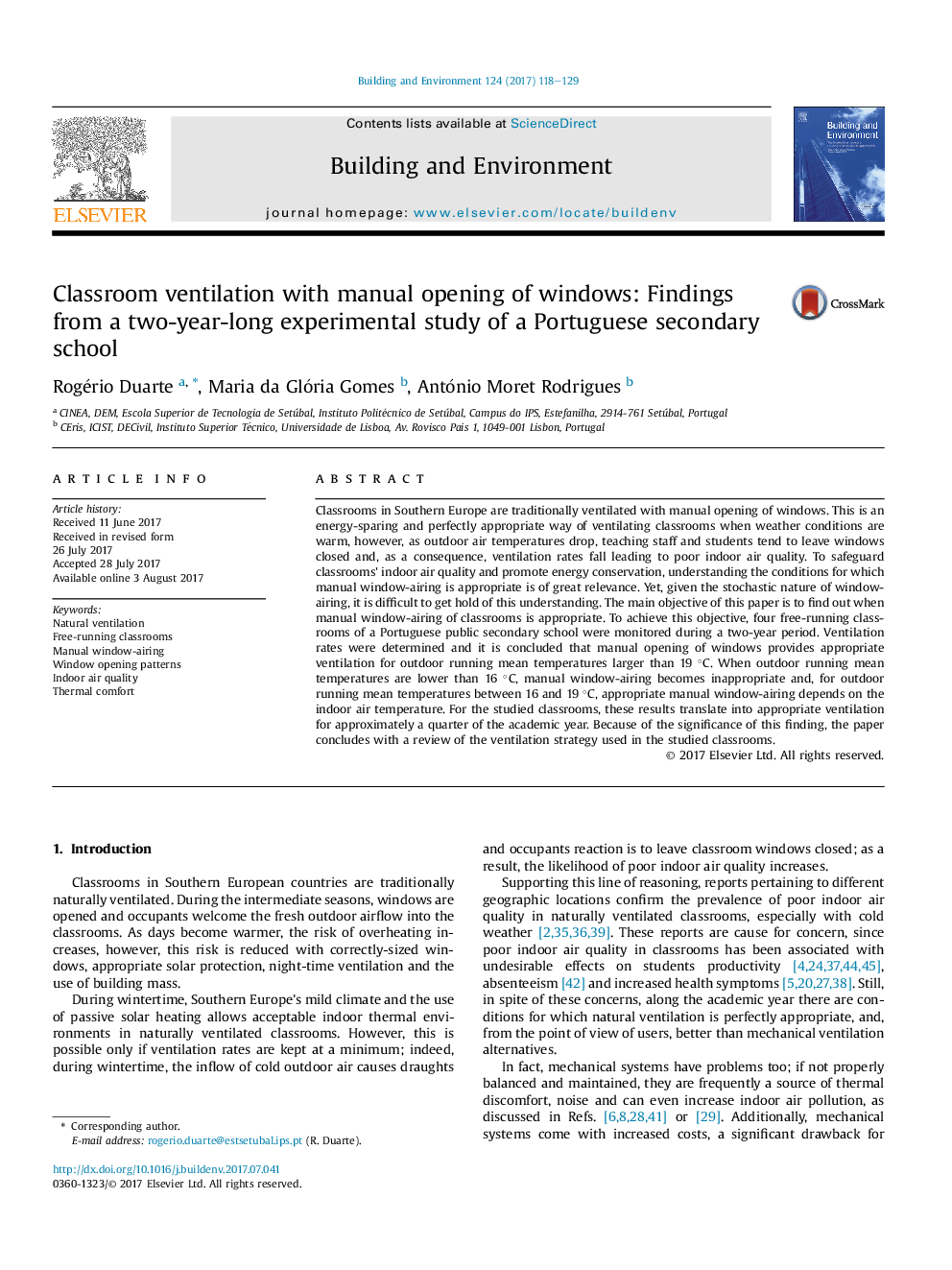| Article ID | Journal | Published Year | Pages | File Type |
|---|---|---|---|---|
| 4911410 | Building and Environment | 2017 | 12 Pages |
Abstract
Classrooms in Southern Europe are traditionally ventilated with manual opening of windows. This is an energy-sparing and perfectly appropriate way of ventilating classrooms when weather conditions are warm, however, as outdoor air temperatures drop, teaching staff and students tend to leave windows closed and, as a consequence, ventilation rates fall leading to poor indoor air quality. To safeguard classrooms' indoor air quality and promote energy conservation, understanding the conditions for which manual window-airing is appropriate is of great relevance. Yet, given the stochastic nature of window-airing, it is difficult to get hold of this understanding. The main objective of this paper is to find out when manual window-airing of classrooms is appropriate. To achieve this objective, four free-running classrooms of a Portuguese public secondary school were monitored during a two-year period. Ventilation rates were determined and it is concluded that manual opening of windows provides appropriate ventilation for outdoor running mean temperatures larger than 19 °C. When outdoor running mean temperatures are lower than 16 °C, manual window-airing becomes inappropriate and, for outdoor running mean temperatures between 16 and 19 °C, appropriate manual window-airing depends on the indoor air temperature. For the studied classrooms, these results translate into appropriate ventilation for approximately a quarter of the academic year. Because of the significance of this finding, the paper concludes with a review of the ventilation strategy used in the studied classrooms.
Related Topics
Physical Sciences and Engineering
Energy
Renewable Energy, Sustainability and the Environment
Authors
Rogério Duarte, Maria da Glória Gomes, António Moret Rodrigues,
